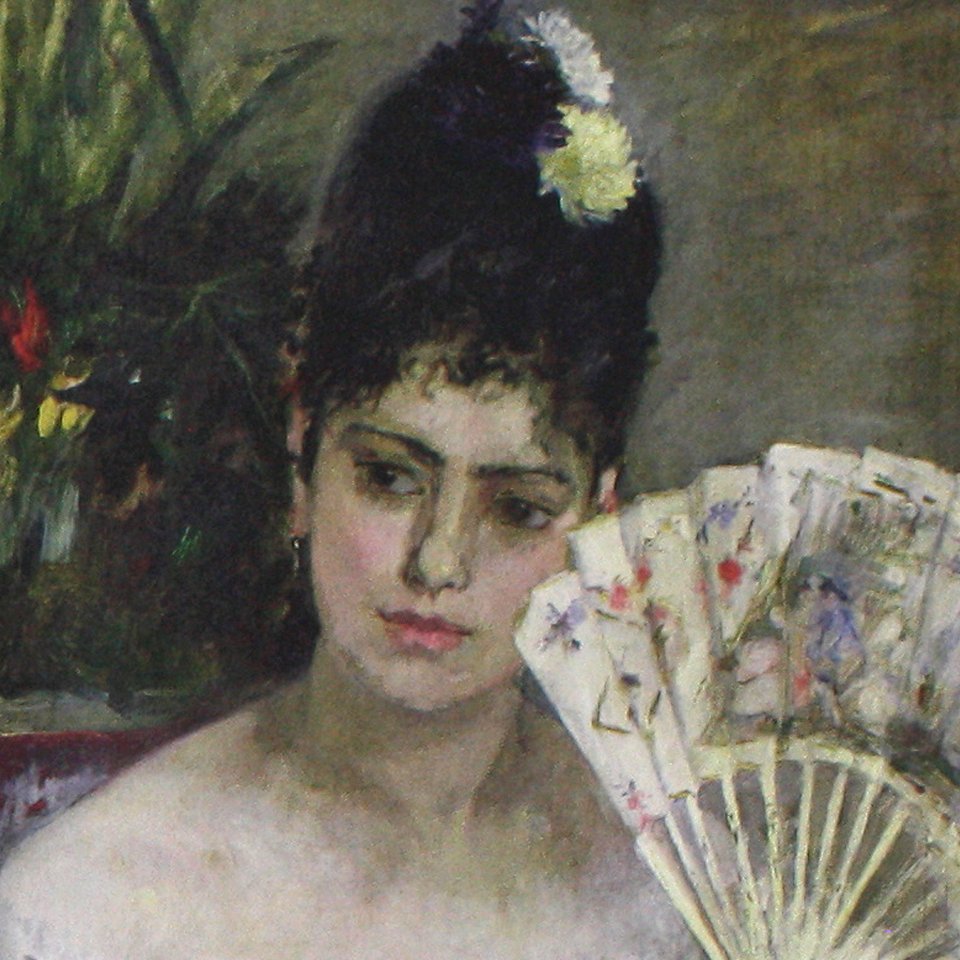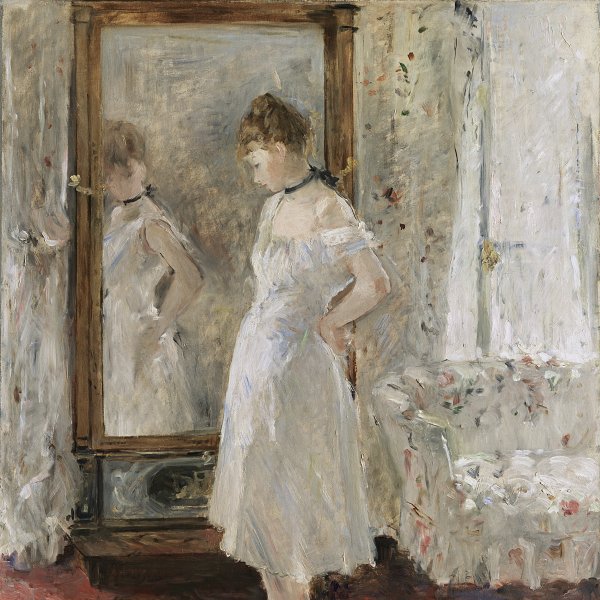Horsewoman, Full-Face (L'Amazone)
Manet captured in his paintings the experiences of the big city and the urban ‘types’ of the period, such as the dandy, the chic Parisienne and the horsewoman. The artist’s commitment was related to the practice of Gustave Courbet, who paved the way for realism and modernity with his figures drawn from different social strata and scenes of daily life. A possible precedent for Horsewoman, Full-Face is Courbet’s Woman in a Riding Habit (L’Amazone) painted around 1855–59 (New York, The Metropolitan Museum of Art). Portrayed in three-quarter view and dressed all in black, with the riding outfit depicted in great detail, the figure is set against a sky and foliage rendered in the same sketchy manner as those in our painting, executed at a later date.
Manet’s technique subsequently progressed towards sweeping, loose brushstrokes, an impressionistic handling of light, and a paring down to bare essentials. As the artist stated during the period he was working on Horsewoman, Full-Face, ‘concision in art is a necessity and a matter of elegance […]. Look for the essential areas of light and shade in a figure; the rest will fall into place’.
Some historians have connected Horsewoman, Full-Face with an incomplete series on the four seasons that Manet produced during the last two years of his life, identifying it as summer. However, the artist’s first biographer, Edmond Bazire, pointed out that the artist never painted representations of summer and winter. The format matches that of Spring (1881) and Autumn (1882), for which the actresses Jeanne Demarsy and Méry Laurent posed respectively, attired in the fashion of the time. Spring had an excellent reception at the 1882 Salon, which the artist may have hoped to repeat with Horsewoman, Full-Face.
According to the annotations in the inventory drawn up after the artist’s death, this work was painted for the 1883 Salon. The same document provides information about the model, in this case unknown to the general public: she was the daughter of a bookseller whom Adolphe Tabarant later identified as Madame Saguez, whose establishment on the Rue de Moscou was very close to the artist’s home. It also states that the riding habit was lent by Emmanuel Gallard-Lépinay, a painter friend. The picture therefore does not depict a true horsewoman, though it must have been painted from life with a real woman posing as a model – a necessary requirement for Manet – and dressed in fashionable clothing, an aspect of the modernity the artist advocated, following in Baudelaire’s footsteps.
Manet addressed the same subject in two other paintings he worked on during his final months, progressing unevenly and varying the pose and angle of view. Although unfinished, Horsewoman, Full-Face may have been the most advanced version and was the only painting of a horsewoman to be included in the major exhibition held the year after his death at the School of Fine Arts in Paris.
Clara Marcellán.

















